Early lactation performance in primiparous and multiparous women in relation to different maternity home practices. A randomised trial in St. Petersburg
- PMID: 17488524
- PMCID: PMC1878468
- DOI: 10.1186/1746-4358-2-9
Early lactation performance in primiparous and multiparous women in relation to different maternity home practices. A randomised trial in St. Petersburg
Abstract
Background: There are not many studies exploring parity differences in early lactation performance and the results obtained are fairly often contradictory. The present study investigated the effect of different maternity home practices in St. Petersburg, Russia, as well as of physiological breast engorgement and maternal mood, on milk production in primi- and multiparous women on day four. The amount of milk was studied in relation to the duration of "nearly exclusive" breastfeeding.
Methods: 176 mother-infant pairs were randomised into four groups according to an experimental two-factor design taking into account infant location and apparel. Data were recorded in the delivery ward at 25-120 minutes postpartum and later in the maternity ward. Group I infants (n = 37) were placed skin-to-skin in the delivery ward while Group II infants (n = 40) were dressed and placed in their mother's arms. Both groups later roomed-in in the maternity ward. These infants had the possibility of early suckling during two hours postpartum. Group III infants (n = 38) were kept in a cot in the delivery and maternity ward nurseries with no rooming-in. Group IV infants (n = 38) were kept in a cot in a delivery ward nursery and later roomed-in in the maternity ward. Equal numbers per group were either swaddled or clothed. Episodes of early suckling were noted. Number of breastfeeds, amount of milk ingested (recorded on day 4 postpartum) and duration of "nearly exclusive" breastfeeding were recorded. Intensity of breast engorgement was recorded and a Visual Analogue Scale measured daily maternal feelings of being "low/blue".
Results: On day four, multiparas had lower milk production than primiparas when they were separated from their infants and breastfeeding according to the prescriptive schedule (7 times a day; Group III). In contrast, there was no difference in milk production between multi- and primiparous mothers in the groups rooming-in and feeding on demand (Groups I, II and IV), although multiparas had higher numbers of feedings than primiparas. In addition during the first three days postpartum, multiparous mothers had higher perception of physiological breast engorgement and lower intensity of feeling "low/blue" than primiparous mothers. Early suckling was shown to positively affect milk production irrespective of parity. Thus Group I and II infants who suckled within the first two hours after birth ingested significantly more milk on day 4 than those who had not (284 and 184 ml respectively, SE = 14 and 27 ml, p = 0.0006).Regression analyses evaluated factors most important for milk production and found in Groups I and II for primiparous women that early suckling, intensity of breast engorgement and number of breastfeeds on day 3 were most important. Intensity of feeling "low/blue" was negatively related to amount of milk ingested. The significant factor for multiparous women was early suckling. Similar results were obtained in Groups III and IV; however, in primiparous mothers, engorgement was the most important factor and in multiparous women it was rooming-in. Amount of milk produced on day 4 was strongly correlated to a duration of "nearly exclusive" breastfeeding (p < 0.0001).
Conclusion: The present data show that ward routines influence milk production. As our data suggest that milk production in primi- and multiparous women may be differently influenced or regulated by complex factors, further research is needed.
Figures
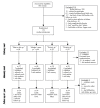
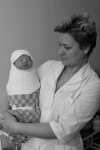

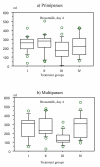



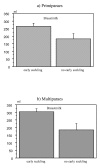
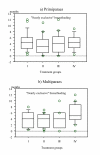
References
-
- Widstrom A-M, Ransjo-Arvidson A-B, Christensson K, Matthiesen A-S, Winberg J, Uvnas-Moberg K. Gastric suction in healthy newborn infants. Effects on circulation and developing feeding behaviour. Acta Paediatr Scand. 1987;76:566–572. - PubMed
-
- Christensson K, Siles C, Moreno L, Belaustequi A, de la Fuente P, Lagercrantz H, Puyol P, Winberg J. Temperature, metabolic adaptation and crying in healthy, full-term newborns cared for skin-to-skin or in a cot. Acta Paediatr Scand. 1992;81:488–493. - PubMed
-
- Bystrova K, Widstrom A-M, Matthiesen A-S, Ransjo-Arvidson A-B, Welles-Nystrom B, Wassberg C, Vorontsov I, Uvnas-Moberg K. Skin-to-skin contact may reduce negative consequences of "the stress of being born": a study on temperature in newborn infants, subjected to different ward routines in St.Petersburg. Acta Paediatr. 2003;92:320–326. doi: 10.1080/08035250310009248. - DOI - PubMed
-
- Christensson K, Cabrera T, Christensson E, Uvnas-Moberg K, Winberg J. Separation distress call in the human neonate in the absence of maternal body contact. Acta Paediatr. 1995;84:468–473. - PubMed
LinkOut - more resources
Full Text Sources
Research Materials
Miscellaneous

